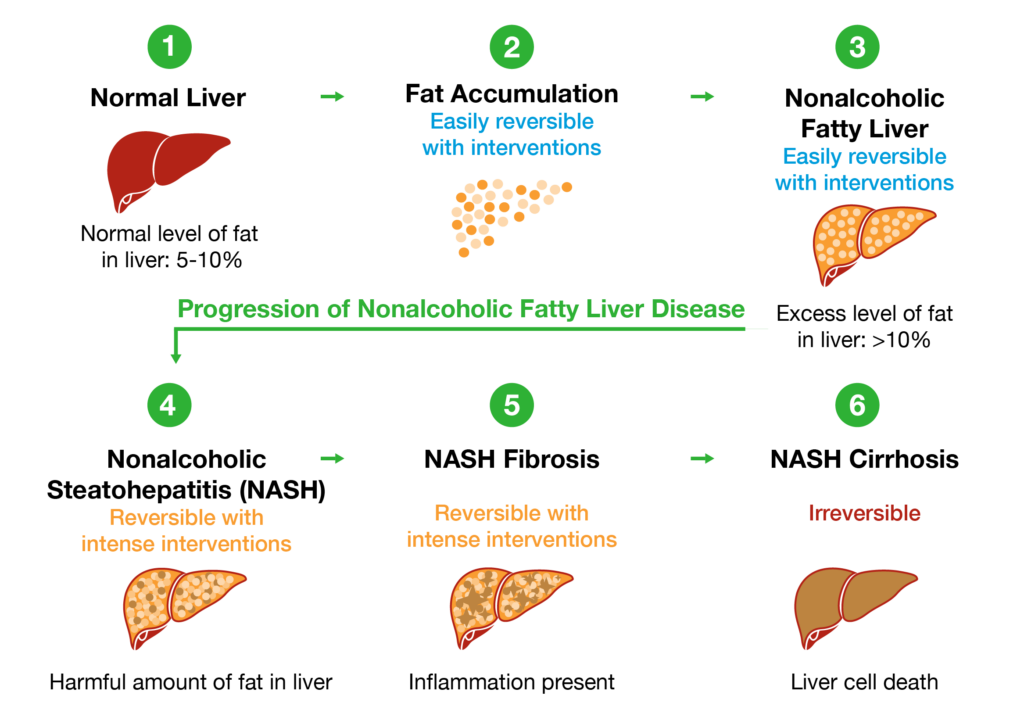The American Association for the Study of Liver Diseases adopted new naming conventions for fatty liver disease and its associated conditions. The name changes aim to promote more inclusive and judgment-free care for people with liver disease.
If you’ve been diagnosed with nonalcoholic fatty liver disease (NAFLD), now known as metabolic dysfunction-associated steatotic liver disease (MASLD), your doctor may have told you that it’s time to get it under control. The good news is that it’s possible to reduce and reverse NAFLD. The bad news is that untreated, NAFLD can eventually lead to liver failure, which requires liver transplant. Here’s how that progression occurs:
NAFLD and its relationship with metabolic syndrome
While it’s true that NAFLD means that your liver has abnormal fat deposits but is not damaged, it can signal the beginning of a larger problem. NAFLD is a signal that your body’s metabolism is damaged – one of the biggest predictors of NAFLD is metabolic syndrome, which includes obesity around the midsection, high cholesterol, high blood pressure, and high blood sugar. Metabolic syndrome raises a person’s risk of developing heart disease and diabetes, so a diagnosis of NAFLD can serve as an early warning of greater health challenges ahead.
NAFLD can lead to its more serious form: nonalcoholic steatohepatitis
In addition, for many people, NAFLD is the first stage in an alarming progression. About 25 percent of people with NAFLD will go on to develop nonalcoholic steatohepatitis (NASH ), now known as metabolic dysfunction-associated steatohepatitis (MASH), which happens when your liver is inflamed, swollen, and damaged as a result of high fat levels. There is no way to predict who will go on to develop NASH and who won’t – and like NAFLD, there are no medications or treatments specifically for NASH.

The six step progression of nonalcoholic fatty liver disease.
NASH causes cirrhosis and liver failure
Your liver has an amazing capacity to regenerate and heal itself. As your liver becomes damaged with NASH, however, scar tissue can build up in the liver as your liver works overtime to repair itself. That scar tissue does not contain functioning liver cells and cannot perform the liver’s necessary functions. As scar tissue builds up, your liver function goes down. Eventually, when too much scar tissue has built up in your liver, you have cirrhosis of the liver. Your liver can no longer do its job.
Overall, the best course of action is to do what you can now to reduce or reverse your NAFLD and improve your liver health – your future self will thank you.
Capital Digestive Care has the region’s best fatty liver disease, now known as steatotic liver disease (SLD), experts. Learn more about how we can help.